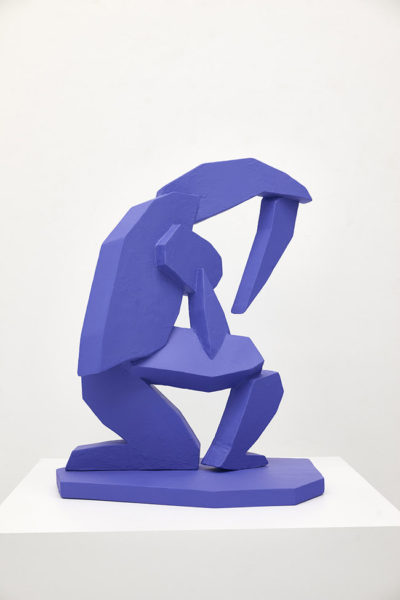
For the exposition you critical art readers did not ask for, it was a Saturday evening, and I was walking down Bowery, hand in hand with my new beau. The night was young — the blues just beginning to overpower the golds in the sky — and the crowds hanging around the Nolita/LES divide were even younger. A gaggle of teens coming out of one of those casual-chic eateries in the neighborhood harmoniously chimed “Love youuuu, byeeeee” before ironically not dispersing afterwards. Just as I was about to make a comment about how there seemed to be an inordinate amount of non-locals in the city this night, I heard my boyfriend exclaim, “Oh look! The Hole,” and felt myself being tugged into a bright white room I had never noticed before.
This Hole, as it turns out, has a lot of history. Kathy Grayson opened The Hole as an art gallery in 2010 after working with the legendary Jeffrey Deitch. She has since earned respect by challenging the sluggish status quo of the art industry and putting forth art that acts as a compelling timestamp of the moment and near-future. Her curation is fresh, exciting, contemporary and lacks the banal drudgery that is a hallmark of so many other established art spaces.
The latest exhibit at The Hole features Jonathan Chapline, an American artist who posits himself on the analog-digital divide, and Misaki Kawai, a Japanese artist (somewhat cliche-ly, considering the current cohort of Japanese artists known to contemporary American viewers) known for her whimsical, colorful designs.

Jonathan Chapline’s “Material Memory” smartly transforms the entirety of the gallery space into a digital grid. This turns the 2D experience of viewing art into a 3D one which offers the viewer the opportunity to insert themselves directly into the space. The art placed around the gallery, then, acts as snapshots or portholes into another semi-digitized realm.
The pieces of art themselves are equally satisfyingly constructed: Still lifes (something of a re-emerging trend) are presented in richly-saturated magentas and ceruleans through acrylic and thick, velvety flashe. Tension is integrated into the pieces through the inclusion of momentary acts or potentialities for violence. One example of this can be found in a piece that features a smashed vase and another such example highlights a power drill at rest.

Misaki Kawai’s “Pine Cone Times” abides in another sort of “other realm.” Kawai’s work is just as strong as — if not stronger than — the work of Chapline. Her loosely-painted, primary-colored pieces are collected naturally around their gallery space like dust bunnies on the floor of a childhood room. In Kawai’s world, dogs and kittens stack and play; flowers bloom, unmetered in their 2D frames; and luscious locks of unsung heroines tumble down like rivers into a white-bounded perpetuity.

There is a sense of friendliness and coexistence to be gleaned from this collection. There is also a sort of contrived sense of youth that is read by the viewer automatically as what I may term “authentic artifice.” It is artificial because we are not fooled by the childlike appearance of the paintings — We know these pieces are made by an adult, and their shared black backgrounds demonstrate the gravitas of maturity. However, it is authentic because perhaps these pieces hint at that pure, unrestrained essence that exists at the heart of us all.

Jonathan Chapline presents something which is immediately gratifying and exciting to those who encounter his works and Misaki Kawai leaves those who encounter her pieces with something to chew over long after the clarity of the images has faded from their mind’s eye. Separately, these shows are strong. Together, however, these two shows offer something more than strength.
This exhibition at The Hole offers promise: It is forward-thinking but reflective. It exists in ode to the greats and pushes forward beyond them. It is the meeting of the logical and the inevitable with the absurdity of the past and the present. To borrow from the lexicon of pop culture iconography and to cater belatedly to the crowds of art-interested non-locals who may be wandering the streets along Nolita and the Lower East Side, this exhibition is a cross between Black Mirror and Alice in Wonderland.
Jonathan Chapline “Material Memory” and Misaki Kawai “Pine Cone Times” are on view until November 11th, 2018 at The Hole at 312 Bowery, NY, NY.




